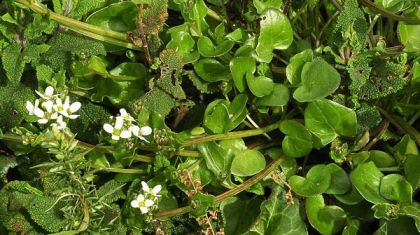This is a small, low-growing, very variable biennial or perennial plant. It is found, from March to August, on saltmarshes, coastal cliffs and walls, and rocky, muddy seashores. The white or very pale mauve flowers (8-10mm across) have four petals and are borne in crowded racemes. The basal leaves are fleshy and kidney-shaped, with arrow-shaped toothed leaves clasping the stem. This is a native plant which belongs to the Brassicaceae family.
I first found this wildflower in Dalkey, Co Dublin in 1977 and I photographed it in 2009 in the same area.
If you are satisfied you have correctly identified this plant, please submit your sighting to the National Biodiversity Data Centre




